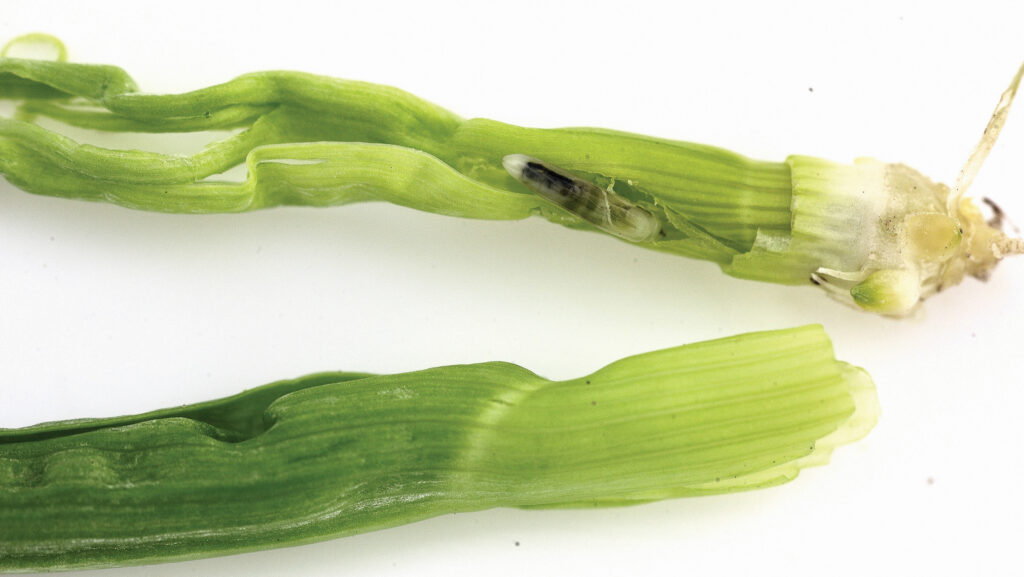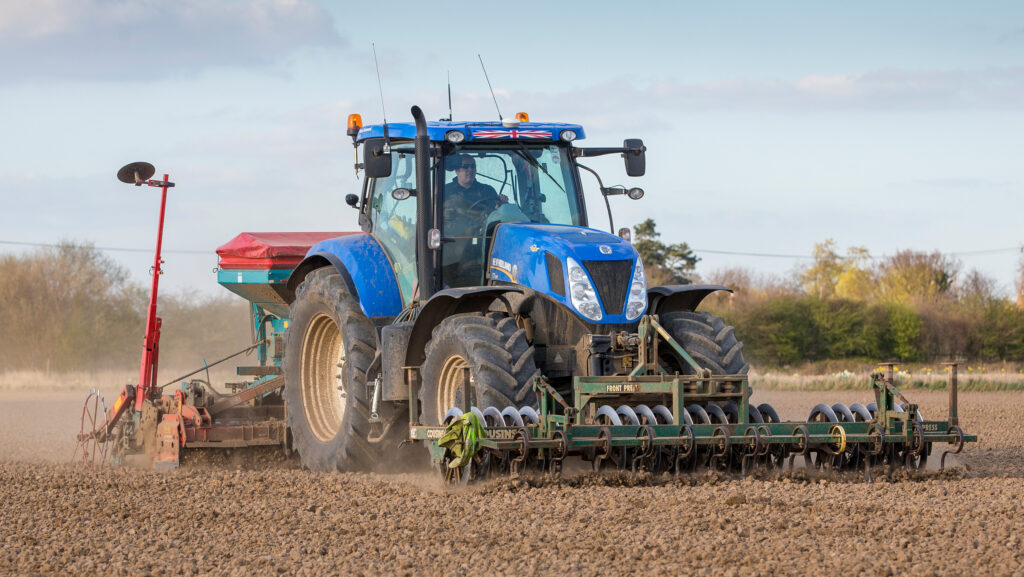Gout fly warning for spring cereals in high-pressure year
 Gout fly on leaf © Blackthorne Arable
Gout fly on leaf © Blackthorne Arable High numbers of gout flies are hitting cereal crops this spring, forcing farmers to reduce their yield expectations and in some extreme cases write off whole crops.
And while it is too late for winter cereals, farmers are being warned of the threat from the spring generation of flies.
See also: Suffolk wheat grower goes for broad-spectrum disease control at T1
Gout fly is a growing cereal pest problem which can affect wheat, barley, and triticale. Its larvae burrow into shoots to feed, causing “deadheart” symptoms to appear.
Early-drilled crops that emerge by the end of September are at greatest risk from the autumn generation of flies.
Reports of high levels are being seen, with Hutchinsons agronomist Amie Hunter posting on X: “Worst gout fly year in a long time. Nothing we can do now in winter cereals, but be aware of pressure for spring crops.”
Frontier agronomist Ed Schofield has also said he is finding plenty of gout fly in earlier sown winter wheat. “Worrying levels in some fields.”
Clive Bailye, a zero-till arable farmer from Staffordshire, said on X that he had found gout fly larvae in his entire winter barley crop, bad enough to write it all off.
“A spring crop will replace it, but every one of those acres will lose money this harvest,” he said, adding that spring cereals were a high risk on his light soils.
Suffolk farmer David Bolden said he had revised his winter cereal yields down by 10-20%.
So what can farmers do? It is too largely late for winter crops, as the damage is done. In less severe cases, it is a case of doing everything to promote tillering with early nutrition and biostimulants.

Drilling spring wheat © GNP
Spring crop threat
Spring crops are at risk from the second-generation adults. They lay eggs in late May on the flag leaf and leaf two. When the eggs hatch, the larvae migrate along the leaf to enter the leaf sheath, and then proceed to damage the wheat stem.
The severity of damage in these spring-sown crops depends on the crop’s development stage when the larvae tunnel into plant shoots. Spring-sown crops are most at risk during mid-stem extension.
The only chemical that can be used as a control method is an approved pyrethoid. Treatment of winter crops may be beneficial when more than half of plants at growth stage 12 have eggs. There is no threshold for spring-sown crops.
Gout fly identification
- Scientific name: Chlorops pumilionis
- Adult flies are yellow with black markings and 4-5mm long
- Eggs are minute, creamy white and torpedo shaped
- Larvae are legless, translucent white and lack a distinct head. When fully grown, they are yellowish-white and 5-6.5mm long, after which they form a somewhat flattened, brownish pupa.
Impact on crops
- In autumn-sown crops, damage is visible as swollen, gouty, and short tillers. This can kill the plant or result in other tillers producing weak ears in summer
- In spring-sown cereals, if the attack occurs before stem elongation, the tiller will be stunted, swollen and gouty, and never produce an ear. If the plant is more developed, damage will be less severe. A poorly developed ear emerges with immature grains spoiled on one side, resulting in yield being halved.
Source: AHDB

